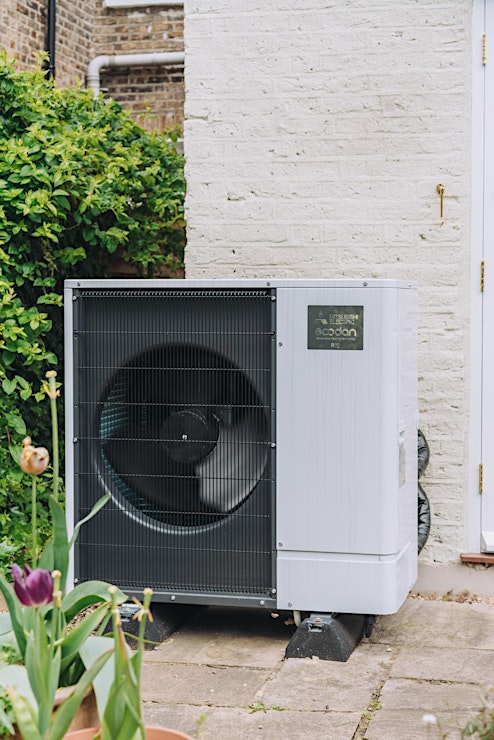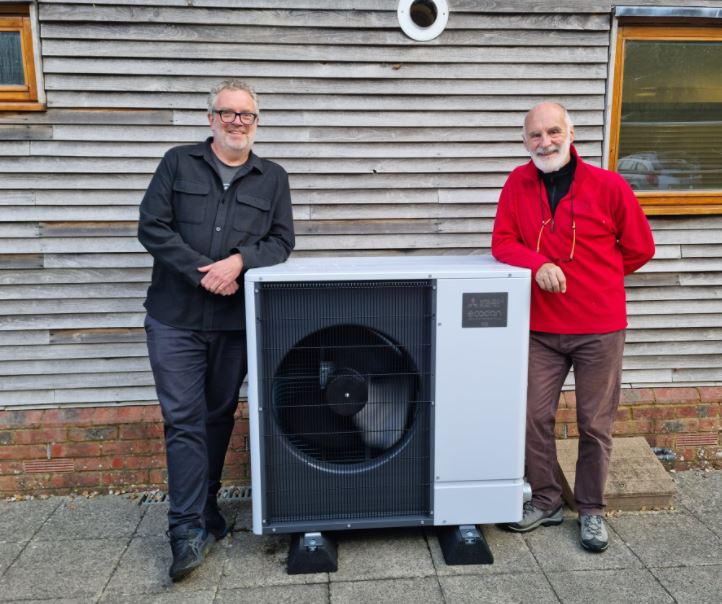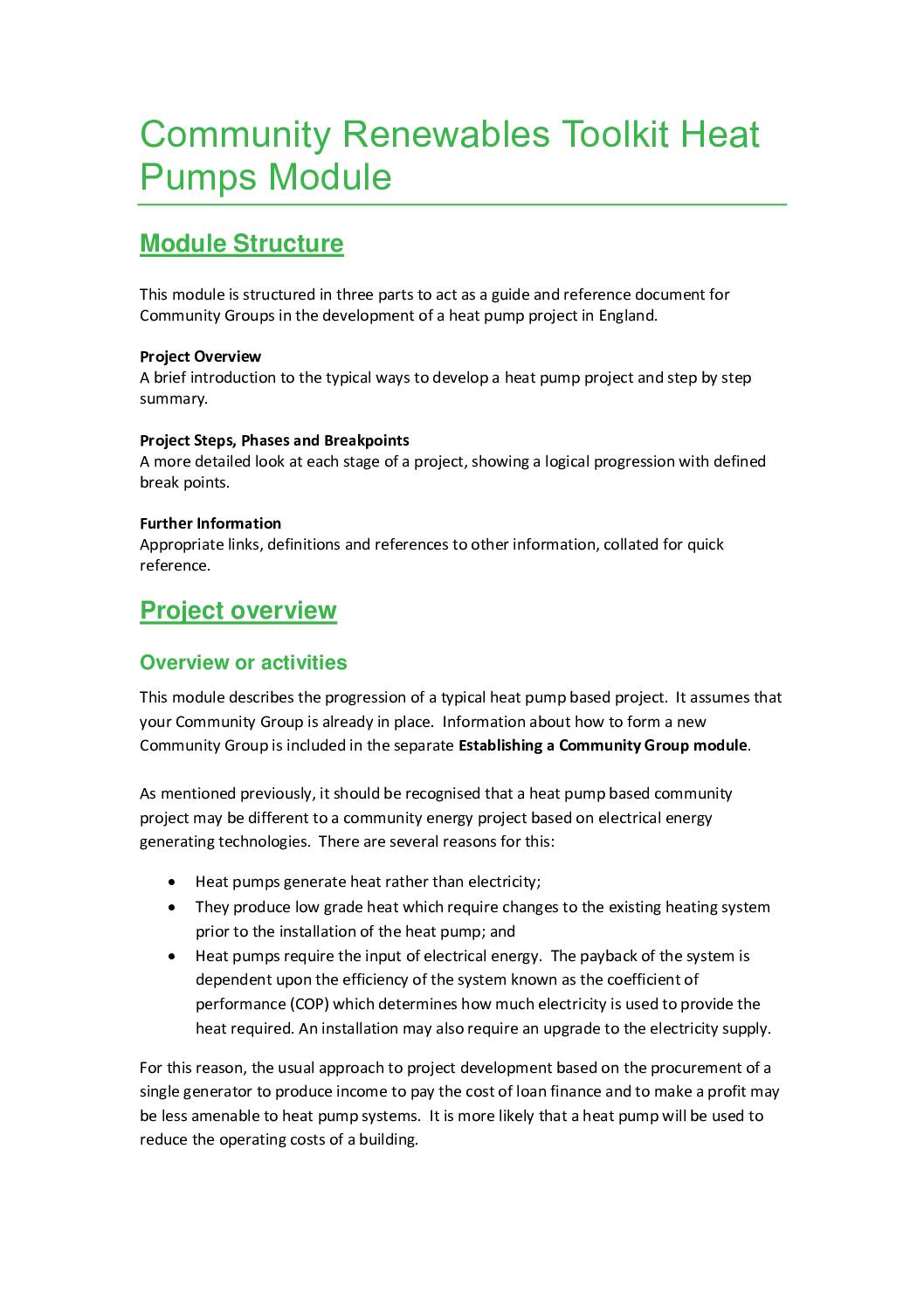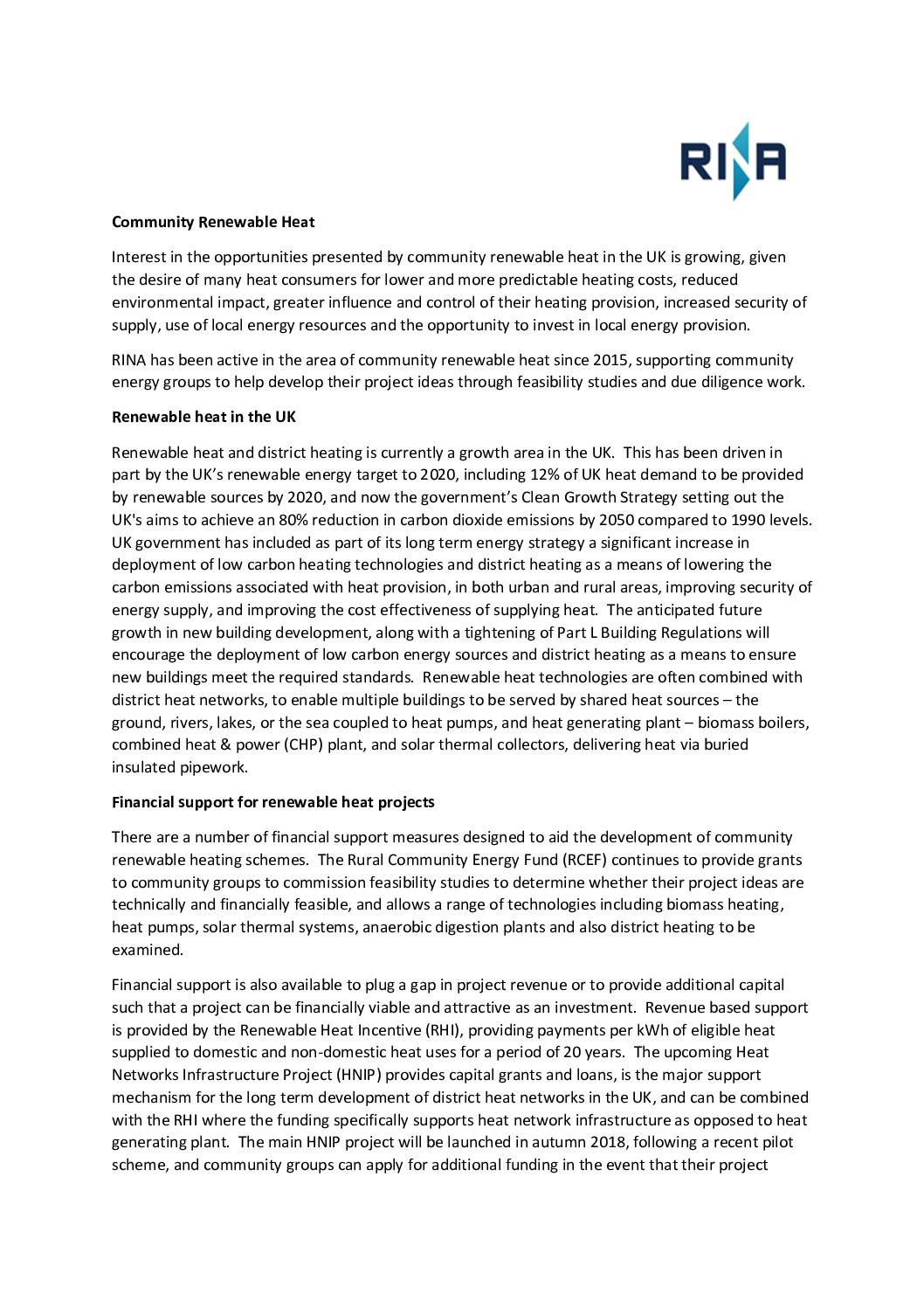
How-to Guide
Low carbon heat
Heating our homes, workplaces and social spaces is a significant challenge in the context of decarbonisation. Taking premises off gas to start using renewable technologies is becoming increasingly of interest to communities.
Heat can be generated by burning biomass (usually wood or sometimes food waste), using ground source or air source heat pumps or by using heat-generating solar panels. These technologies, particularly when coupled with energy efficiency interventions can create huge benefits and increased levels of comfort for people and places.
heat pumps
Heat pumps are commonly available in three forms – ground source heat pumps (GSHP), air source heat pumps (ASHP) and water source heat pumps (WSHP). This page will introduce the technology within the context of a community project and provide links to external sites with more information. These systems use a pump and refrigerant cycle to collect ambient heat. GSHPs collect heat from the ground via horizontal or vertical ground loop. ASHP’s collect ambient heat from the air via an external unit. This heat is then distributed to a property with heat radiators, underfloor or warm air heating systems in domestic or non-domestic property.
In most cases, a community owned heat pump installation will derive its income from the renewable heat incentive. With additional savings possible depending on the fuel source that has been replaced.
What are the benefits?
- Suitable for properties off the gas grid, or to replace direct electric heating systems
- Can lower carbon emissions, depending on the fuel type being replaced.
- No heating oil or LPG deliveries are needed.
- Long term shift away from relying on natural gas to heat properties where electricity generation is provided by low carbon sources, thus improving energy security.
Site suitability
Heat pumps often require a strong grid connection and it is important to notify the DNO to check suitability.
Heat pumps are particularly cost effective when replacing expensive forms of heat generation e.g. heating oil or direct electric heating.
For GSHP the site must have enough space for horizontal trenches, or suitable ground for vertical boreholes.
For ASHP the building must have suitable outdoor space to house the heat pump unit.
Suitable heat distribution units within the building, ideally underfloor heating or radiators with a large surface area.


wood fuel
Wood-fuel can be burned to provide heat and generate power. As long as the wood is sourced from sustainably managed forests this can provide a renewable energy source. For community-scale energy projects, wood fuel (sometimes referred to as “biomass” along with other potential organic fuels such as food-waste) will usually be burned in heating or combined heat and power systems. Wood fuelled heating systems burn wood pellets, chips or logs in a controlled way to provide warmth in a single room or to power central heating and hot water boilers. Combined heat and power systems generate electricity as well as producing heat and are generally best used on sites with significant heating needs all year round. This page will introduce the technology within the context of a community project and provide links to external sites and modules with more information.
Biomass systems are available in a range of sizes – small (1-199kWth), medium (200-999kWth) and large (1MWth+). The vast majority of systems installed in the UK have been small or medium.
Biomass systems have been developed by community groups across the UK and are particularly common in rural locations that are not connected to the gas network. Savings possible depending on the cost of the fuel source that has been replaced.
What are the benefits
There are a number of benefits to installing biomass heating in a domestic or non-domestic scenario, these include:
- Community biomass systems work particularly well where there is a large heat requirement.
- Biomass is a mature, well developed technology with an established installer and fuel supply chain.
- Biomass can help reduce costs and carbon emissions, especially in off-grid situations relying on electric heating.

key points
To consider for community biomass
Site selection – wood boilers are larger than conventional gas or oil equivalents and you will need space to store the fuel. The area must be able to handle large deliveries as well as the initial delivery and construction of the system.
Fuel type – there are a number of different forms of biomass that can be used – pellets, logs or wood chips each with different advantages and disadvantages. The long term availability of fuel source should be considered.
Installer – an MCS approved installer is essential. It is advisable to get several quotes from installers to ensure value for money.
Incentives and savings – a biomass heating system will displace fossil fuel generation and can result in cost savings, depending on the fuel type displaced.
solar thermal
Solar water heating systems (solar thermal) use heat from the sun to warm water for domestic/non-domestic use. A typical installation consists of the following components.
Solar thermal panels – these are panels placed on the roof of a building to transfer heat from the sun to circulating fluid. There are two common types available:
- Evacuated tubes – these consist of a series of glass tubes and are generally the highest performing choice.
- Flat plate collectors – these consist of flat black plates and can be fixed on to roof tiles or integrated into the roof.
Thermal store – these are essentially large insulated water storage devices containing the water that will be supplied to the end user. A thermal store is needed as solar thermal energy collected is diffuse and accumulated throughout the day for use.
Supplementary heat source – solar thermal systems often have a supplementary heat source to ensure an adequate supply of water during low output days.
Pump – this is used to pump the circulating fluid around the system, transferring heat from the rooftop to the thermal store. These are often powered by a small additional solar PV unit.
What are the benefits?
There are a number of advantages to installing a solar thermal heating system in a domestic or non-domestic scenario which include:
- Income can be generated from the domestic or non-domestic renewable heat incentive.
- Solar thermal is a mature, well developed technology with few operational issues, where proper maintenance is undertaken.
- Solar thermal can help reduce costs and carbon emissions associated with heating hot water.
- Community solar thermal systems work particularly well where there is a large heat requirement, especially in summer.
key points
To consider for community solar thermal
Site selection – existing community solar thermal installations involve a single building with a suitable heat load. These could include – sports centres, swimming pools, care homes, hospitals, farm buildings or camp sites.
Installer – An MCS approved installer is essential to claim renewable heat incentive payments. It is advisable to get several quotes from installers to ensure value for money. Solar thermal systems can be complicated and must be designed correctly to maximise the investment.
Savings – a solar thermal system will displace fossil fuel generation and therefore result in cost savings to the community group or organisation utilising the energy.
Resources
-
The Mayor of London commissioned the Carbon Trust, to produce a report intended to help guide local authorities, social housing providers and others considering a heat pump retrofit, and highlights the principles of good practice system design, with case studies providing detailed analysis of the potential to retrofit heat pumps in 15 existing buildings and carbon savings and costs.
-
Heat pumps using ground water from boreholes or surface water from rivers and lakes can provide low carbon heating solutions. The National Heat Map provides information on the potential heat available from rivers and lakes and canals in England.
-
The Ground Source Heat Pump Association has produced an environmental good practice guide for ground source heating and cooling.
-
Heat pump information and fact sheets
Centre for Sustainable Energy – air source heat pump information page
Centre for Sustainable Energy – heat pump fact check
UK Power Networks – heat pump information page

Community Renewables Toolkit Heat Pumps Module
Download (PDF, 537KB) Community Renewables Toolkit Heat Pumps Module


